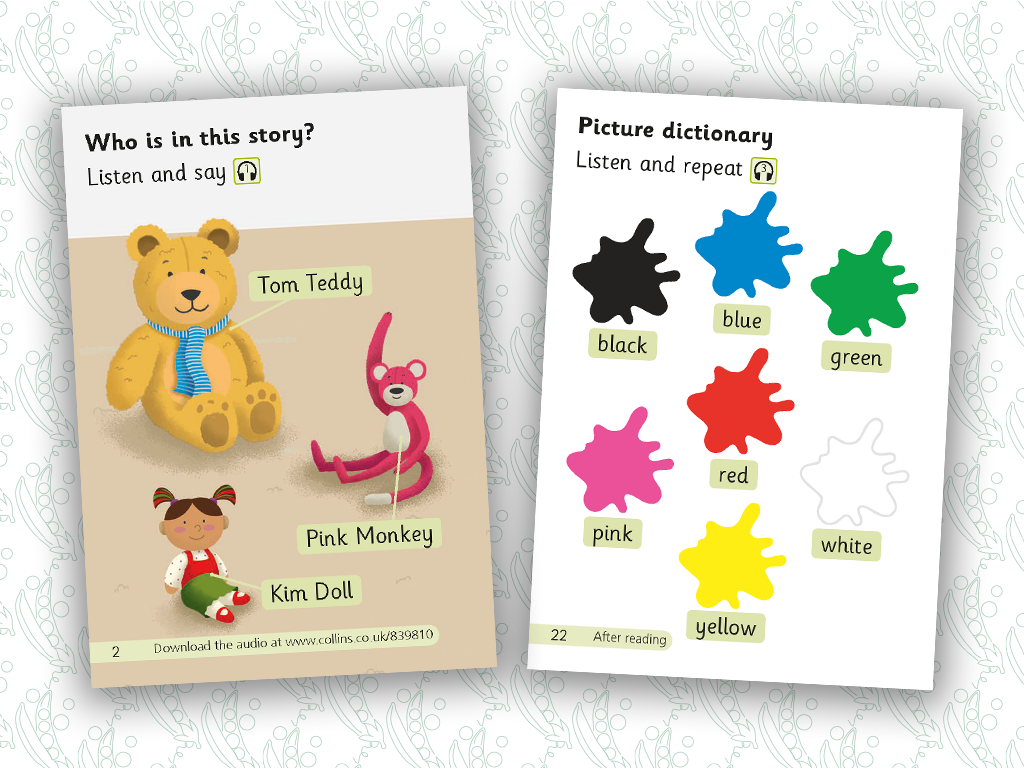It seems to me that we often fall into the trap of viewing readers as an added extra in English language teaching, when in fact readers can offer so much more and be an integral part of a young learner’s English learning journey. Readers make learning English a positive and fun experience. Readers anchor vocabulary and language in varied and meaningful contexts. They support all of the classroom and coursework learning, and extend that learning by presenting the vocabulary and language in multiple scenarios.
Readers can also provide essential practice and preparation for the Cambridge Young Learner (CYL) Starters and Movers qualifications. Success in these exams means understanding and being able to use an extensive number of vocabulary items and language structures in context, and to recognise and be able to talk about a number of different topics. Readers, such as the new Collins ELT primary Peapod series, offer a constant and consistent exposure to these which is crucial in order to produce confident candidates.

The word lists for each level are based on the CYL lists. Levels 1-3 align with the Starters word list, structures and topics. Level 4, includes some Movers vocabulary and introduces some of the simpler Movers structures. Level 5 fully aligns with Movers. Key topic words are presented on each before reading spread. Key lexical sets are then reinforced in the picture dictionary, or mini-dictionary in level 5, at the end of the book. Both pages have a pre-recorded downloadable audio so learners can recognise and repeat these words with confidence. Therefore, you can be confident that when a learner picks up a Peapod book they are reviewing and reinforcing the CYL syllabus.

In addition, the Peapod readers have a unique after reading activity specifically designed to train learners for the CYL speaking exams (Starters parts 1, 3 and 5; Movers part 5). Using an image from the book they have just read as a visual prompt, learners listen to a pre-recorded set of exam-style questions read by a native English speaker in the style of a CYL examiner. Questions are scaffolded so that in the lower levels learners are exposed to simpler closed questions, with more complex, open questions that require opinions or more personal responses being gradually included in the higher levels. Learners look at the picture, listen to the questions, and attempt to respond as they would in the Speaking exam. If you or one of your learners’ parents would prefer to read the questions aloud then you will find the script, along with suggested or required responses, in the accompanying downloadable PDF guide. In this way, parents can be encouraged to engage and support their child’s English language journey, too.

Learners are not expected to be able to respond to every question, especially at their first try, and in situations where they are working remotely or autonomously. But through practice and more practice,they will begin to develop their ear for hearing and understanding the different questions, and their confidence in responding in English will grow. Over time a physical response, such as a shake of the head or a show of fingers, or single-word answer, such as ‘yes’ or ‘no’, will develop into a more extended and coherent verbal answer setting each learner up for exam success.
A relaxed and well-prepared candidate will do better in the exam – familiarity breeds not contempt, but exam ease and confidence.
Written by Series Editor Rebecca Adlard, an experienced ELT professional who has a love of stories, plays and playing, and continually looks for ways to include these in language learning.
This is the first of a series of blog articles on how to get young learners immersed into reading in English. Follow us at CollinsELT on Facebook and Twitter to keep up to date.
Collins Peapod Readers is our new graded readers series for young learners starting their journey into learning English.
Find out more about the readers here.
